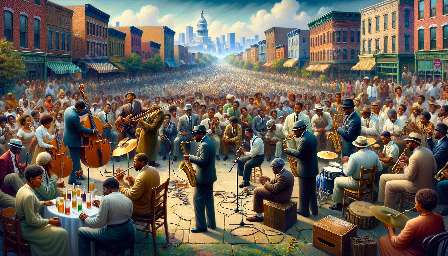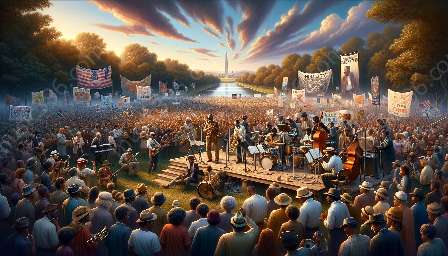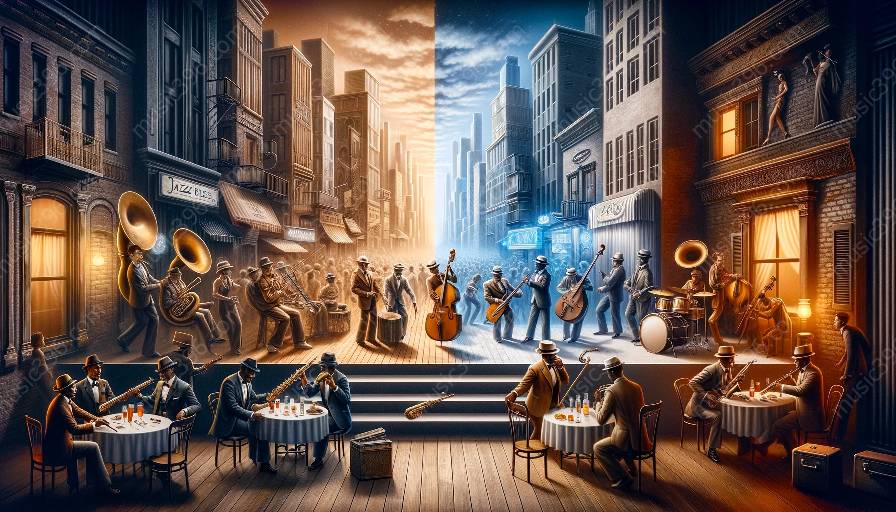Jazz music has shaped and influenced the world of music for over a century, and its development can be traced through various milestones and historical turning points. From its roots in African and European musical traditions to its global influence and evolution, jazz has undergone significant transformations that have shaped its history and influenced other genres, including blues music. By exploring these milestones and turning points, we gain a deeper understanding of jazz's impact on the music world and its enduring legacy.
Birth of Jazz: Early 20th Century
The birth of jazz marks a significant turning point in the history of music. Emerging in the early 20th century in the United States, particularly in New Orleans, jazz was born out of the fusion of African and European musical traditions. It incorporated elements of blues, ragtime, spirituals, and brass band music, creating a unique and vibrant sound that captured the spirit of the time. New Orleans, with its mix of cultures and musical influences, served as a melting pot for jazz's early development, and the city's lively music scene became the epicenter of the genre's birth.
The Great Migration and the Spread of Jazz
Following the Great Migration of African Americans from the South to urban centers in the North, jazz spread rapidly across the country. Cities like Chicago, New York, and Kansas City became hotbeds for jazz innovation and creativity. The migration of talented musicians, such as Louis Armstrong, Duke Ellington, and Bessie Smith, from the South to these urban centers played a pivotal role in the genre's expansion and popularity.
Golden Age of Jazz: The Swing Era
The Swing Era, spanning the 1930s and 1940s, marked a golden age for jazz as big bands led by legendary figures like Count Basie, Benny Goodman, and Duke Ellington dominated the music scene. The infectious rhythms of swing music and its danceable melodies captivated audiences and propelled jazz to the forefront of popular culture. Swing music became the soundtrack of an era, providing joy and solace during difficult times, such as the Great Depression and World War II.
Evolution of Jazz: Bebop and Beyond
The emergence of bebop in the 1940s signified a new chapter in the evolution of jazz. Championed by innovative musicians like Charlie Parker, Dizzy Gillespie, and Thelonious Monk, bebop represented a departure from the accessible melodies of swing, favoring complex harmonies, rapid tempos, and virtuosic improvisation. This shift in musical language pushed the boundaries of jazz and inspired future generations of musicians to explore new artistic horizons.
Fusion and Experimentation
In the following decades, jazz continued to evolve through fusion with other musical genres, such as rock, funk, and world music. Pioneering artists like Miles Davis, Herbie Hancock, and John Coltrane experimented with new sounds and technologies, expanding jazz's sonic palette and breaking down traditional musical barriers. This spirit of experimentation and fusion gave birth to subgenres like jazz fusion, free jazz, and fusion-infused electric jazz, further diversifying the genre's landscape.
Contemporary Jazz and Global Influence
Today, jazz remains a vital and influential force in the global music scene. Its impact can be felt across diverse cultures and musical traditions, continually inspiring new generations of musicians and transcending geographical boundaries. Jazz festivals and events around the world celebrate the genre's rich history and vibrant present, showcasing a wide array of styles and interpretations that continue to push the boundaries of musical expression.
Impact on Jazz and Blues Music
Jazz's influence on blues music has been profound and reciprocal. Both genres emerged from African American musical traditions and have shared a symbiotic relationship throughout their histories. The expressive vocals and improvisational nature of blues have informed jazz performances, while jazz's harmonic complexity and rhythmic innovations have left a lasting mark on the evolution of blues music.
Intersection of Jazz and Blues
The intersection of jazz and blues has given rise to hybrid genres, such as soul jazz, jazz blues, and blues-inflected jazz, showcasing the unique blend of musical elements from both traditions. Musicians like Ray Charles, Etta James, and B.B. King have seamlessly navigated between jazz and blues, embodying the interconnectedness of these two influential genres and expanding the sonic possibilities of their combined heritage.
Legacy and Continued Evolution
As jazz and blues continue to evolve and inspire new generations of musicians, their legacies remain intertwined, perpetuating a musical conversation that transcends time and genre boundaries. The enduring impact of jazz and blues on the global music landscape attests to their resilience, creativity, and ability to connect people across diverse backgrounds, making them essential pillars of musical expression and cultural heritage.






























